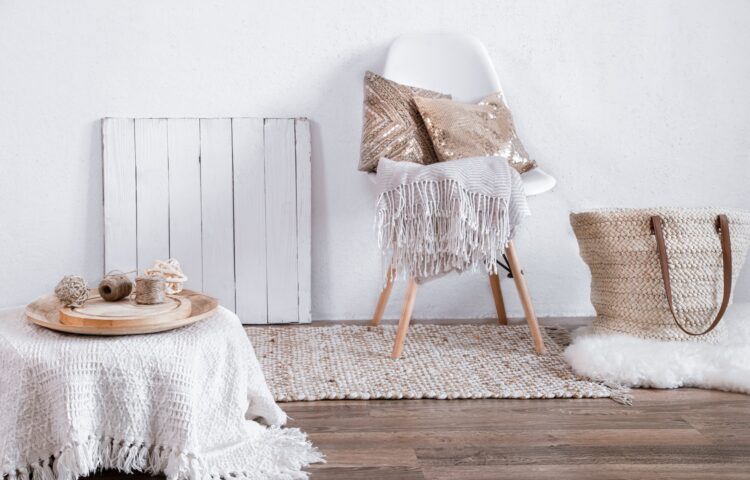Creating a reading nook isn’t just about finding a corner and tossing in a few pillows. It’s about designing a space that invites calm, encourages focus, and feels like a personal retreat. Whether you have an empty bay window, a spot under the stairs, or a spare corner in your living room, you can transform it into a sanctuary of comfort and functionality with a few intentional choices. In this post, we’ll walk through the elements that bring a reading nook to life—no fluff, just practical ideas and creative vision.
1. Choose the Right Location
Let Light and Silence Lead the Way
The best reading nooks are where natural light and quiet meet. Look for a space that receives ample daylight—next to a window is ideal, especially one that offers a tranquil view. Natural lighting doesn’t just save electricity; it reduces eye strain and boosts your mood, making long reading sessions more enjoyable.
Avoid high-traffic areas. A reading nook should feel tucked away from the main household chaos. Think of alcoves, unused corners, or even converting a closet. The goal is to create a peaceful zone that doesn’t feel like an afterthought.
Create a Sense of Separation
Even if your chosen spot is in a shared room, you can still set it apart visually. Use a small bookshelf or tall plant to create a subtle boundary. A different rug, paint color, or wallpaper pattern can also signal that this is a space with a special purpose.
2. Comfort is King
The Seating Makes the Space
Seating is the heart of your nook. Think beyond standard armchairs. A deep, cushioned window seat with storage underneath, a plush recliner, or even a wide upholstered bench can work wonders. Add a soft throw blanket and a few textured pillows to make it irresistibly cozy.
This is where functionality meets elegance. For instance, pieces similar in design to cafe furniture bring light, stylish sophistication without overwhelming the room. Choose furniture that doesn’t crowd the space but still feels intentional and inviting.
Keep Essentials Within Reach
A small side table is a must. You’ll need a place to set down your book, tea, or reading glasses. Bonus points if it has drawers or shelves. Add a sleek reading lamp to extend your nook’s usability into the evening hours.
3. Add Personal Touches
Decor That Inspires Stillness
Your nook should reflect you. Add framed prints of your favorite quotes, photos from trips, or even a small plant. Keep décor minimal but meaningful—this isn’t the place to clutter.
For a quiet ambiance, consider a sound machine or diffuser with lavender or sandalwood oil. Creating a multisensory experience helps reinforce the sense of escape that a good reading nook offers.
Seasonal Adaptability
Think about how your space will feel during the year. Lightweight fabrics in the summer, warmer textures in the winter. Swapping out small elements seasonally can keep the space feeling fresh without major effort.
4. Functional Add-Ons for Convenience
Keep Storage Subtle
You’ll want room for books, of course, but the storage should blend with the aesthetic. Floating shelves or a built-in cubby are excellent options. Baskets tucked underneath a bench can store extra throws or magazines without visual clutter.
Wall-mounted magazine racks or vertical shelves can save floor space while still holding a decent collection. The key is balancing accessibility with minimalism.
Thinking Long-Term Usability
If your nook is part of a multipurpose room, make your furniture easy to move or repurpose. Lightweight chairs, portable lamps, and modular storage will give you the freedom to adapt the nook as your needs change.
5. Expand the Purpose When Needed
Multifunctional by Design
A reading nook can be more than a spot for books. It can double as a prayer space, a journaling corner, or even a place to take a calming nap. Add a small pouf or meditation cushion, and you’ve subtly expanded its use without changing its identity.
In some homes, especially those caring for elders, such spaces can also support quiet moments for rest and reflection. If you’re exploring adaptable interior design, integrating functionality like that used in homecare nursing spaces can add unexpected depth and comfort.
Outdoor Nook Ideas
Don’t rule out your patio or balcony. With weatherproof seating and a few cozy touches, you can create a reading nook under the sun or stars. Think of it as an outdoor escape for your mind and spirit.
6. Optional: Infuse Personality Through Hobby Integration
Highlight What You Love
If you’re a nature lover, add a bird-watching journal and binoculars. If you’re into archery or sports, a framed photo of your favorite TenPoint Crossbows setup adds character and makes the space more “you.” The nook becomes a reflection of your passions, not just a place to read.
Avoid Over-Theming
One thing to avoid is over-decorating with a strict theme—like turning it into a nautical or vintage space unless that truly resonates with you. Too much themed decor can distract from the relaxing energy a reading nook should have. Keep things intentional, not ornamental.
Conclusion
Designing the perfect reading nook is a mix of form, function, and feeling. It doesn’t require a huge space or a big budget—just thoughtful choices that prioritize comfort, quiet, and personal style. From furniture selection to lighting and accessories, every detail counts.
When your reading nook feels like a refuge, it becomes more than a corner—it becomes your go-to destination for stillness and inspiration. Take your time, trust your taste, and enjoy the transformation one cozy layer at a time.

